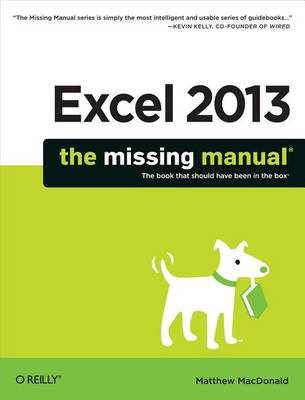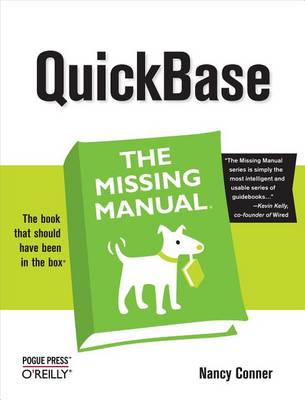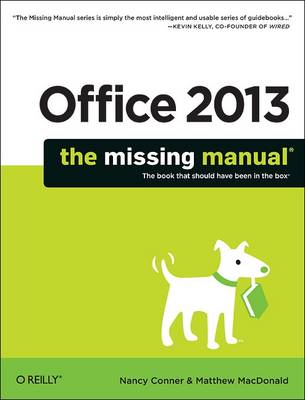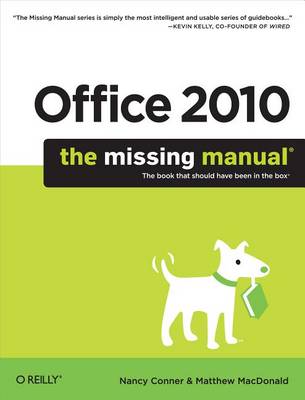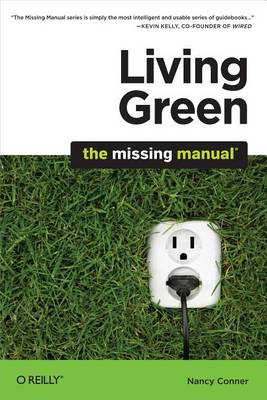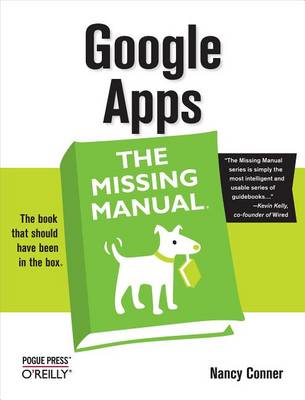Missing Manual
7 total works
The world's most popular spreadsheet program is now more powerful than ever, but it's also more complex. That's where this Missing Manual comes in. With crystal-clear explanations and hands-on examples, Excel 2013: The Missing Manual shows you how to master Excel so you can easily track, analyze, and chart your data. You'll be using new features like PowerPivot and Flash Fill in no time. The important stuff you need to know: Go from novice to ace. Learn how to analyze your data, from writing your first formula to charting your results. Illustrate trends. Discover the clearest way to present your data using Excel's new Quick Analysis feature. Broaden your analysis. Use pivot tables, slicers, and timelines to examine your data from different perspectives. Import data. Pull data from a variety of sources, including website data feeds and corporate databases. Work from the Web. Launch and manage your workbooks on the road, using the new Excel Web App. Share your worksheets. Store Excel files on SkyDrive and collaborate with colleagues on Facebook, Twitter, and LinkedIn. Master the new data model. Use PowerPivot to work with millions of rows of data. Make calculations.
Review financial data, use math and scientific formulas, and perform statistical analyses.
Review financial data, use math and scientific formulas, and perform statistical analyses.
Ready to put Intuit's QuickBase to work? Our new Missing Manual shows you how to capture, modify, share, and manage data and documents with this web-based data-sharing program quickly and easily. No longer do you have to coordinate your team through a blizzard of emails or play frustrating games of "guess which document is the right one." QuickBase saves your organization time and money, letting you manage and share the information that makes your business tick: sales figures, project timelines, drafts of documents, purchase or work requests--whatever information you need to keep business flowing smoothly. QuickBase: The Missing Manual shows you how to choose among QuickBase's dozens of ready-made applications (mini-databases, essentially) and how to customize one to fit your needs exactly. You'll also learn to assign people different roles within the application. The guide also shows you how to: * Capture and modify data: Whatever kind of data you need to store--sales leads, catalog listings, project milestones, workflow checklists--you can use QuickBase's forms to record and organize that data so it makes sense to you.
* Filter, sort, and group data: Easily find the records that match your criteria, and then sort those records into groups that make their relationships clear. * Display your data: QuickBase uses different views (Table, Grid Edit, Summary/Crosstab, Calendar, Chart, and Timeline) to display and summarize data. Switching between them is easy, like taking tasks listed in a table and displaying them as a timeline. * Create reports: Print out a hard copy, embed charts in the annual report, or email this month's sales numbers. Because Intuit frequently introduces new features to QuickBase, you'll find updates to this book at our Missing Manual web site so you can benefit from the latest technology and user suggestions right away.
* Filter, sort, and group data: Easily find the records that match your criteria, and then sort those records into groups that make their relationships clear. * Display your data: QuickBase uses different views (Table, Grid Edit, Summary/Crosstab, Calendar, Chart, and Timeline) to display and summarize data. Switching between them is easy, like taking tasks listed in a table and displaying them as a timeline. * Create reports: Print out a hard copy, embed charts in the annual report, or email this month's sales numbers. Because Intuit frequently introduces new features to QuickBase, you'll find updates to this book at our Missing Manual web site so you can benefit from the latest technology and user suggestions right away.
Microsoft Office is the most widely used productivity software in the world, but most people just know the basics. This helpful guide gets you started with the programs in Office 2013, and provides lots of power-user tips and tricks when you're ready for more. You'll learn about Office's new templates and themes, touchscreen features, and other advances, including Excel's Quick Analysis tool. The important stuff you need to know: Create professional-looking documents. Use Word to craft reports, newsletters, and brochures for the Web and desktop. Stay organized. Set up Outlook to track your email, contacts, appointments, and tasks. Work faster with Excel. Determine the best way to present your data with the new Quick Analysis tool. Make inspiring presentations. Build PowerPoint slideshows with video and audio clips, charts and graphs, and animations. Share your Access database. Design a custom database and let other people view it in their web browsers. Get to know the whole suite. Use other handy Office tools: Publisher, OneNote, and a full range of Office Web Apps. Create and share documents in the cloud. Upload and work with your Office files in Microsoft's SkyDrive.
